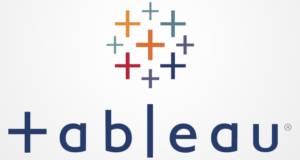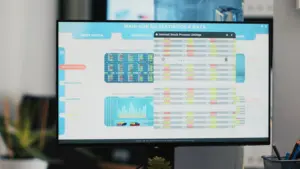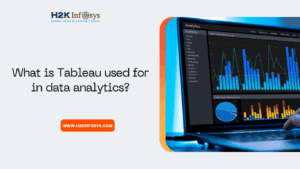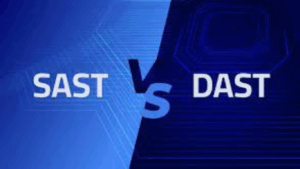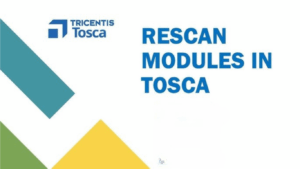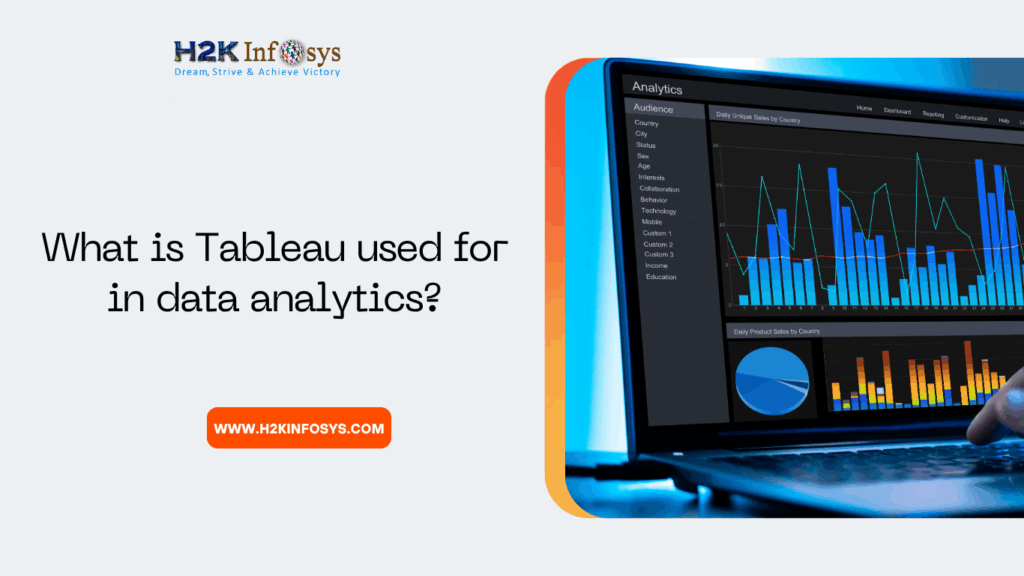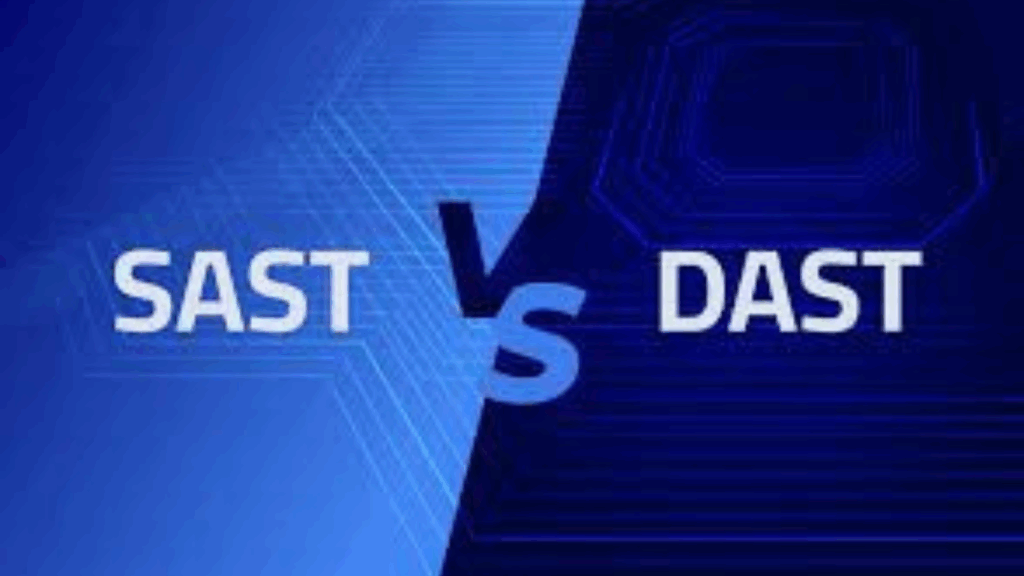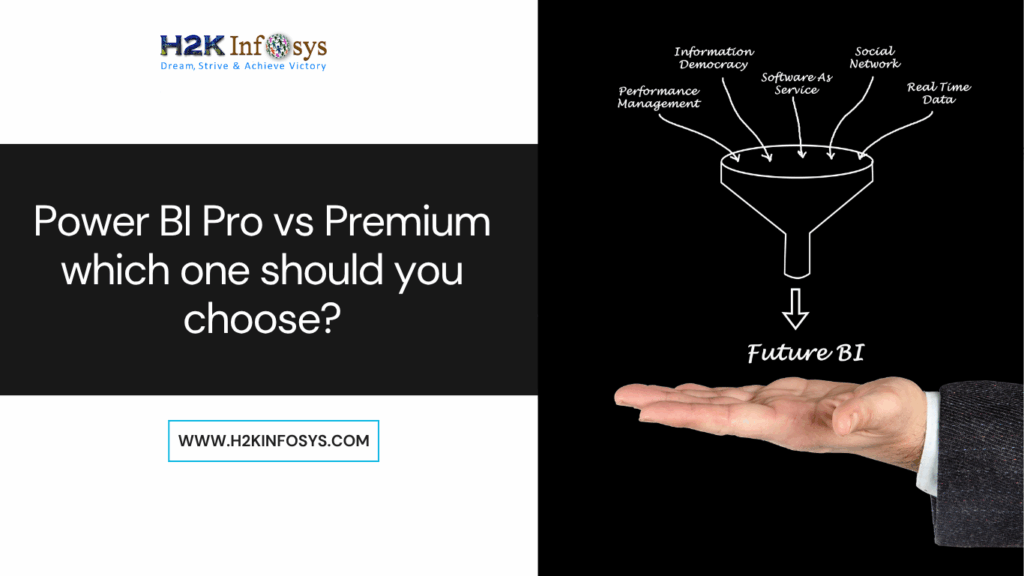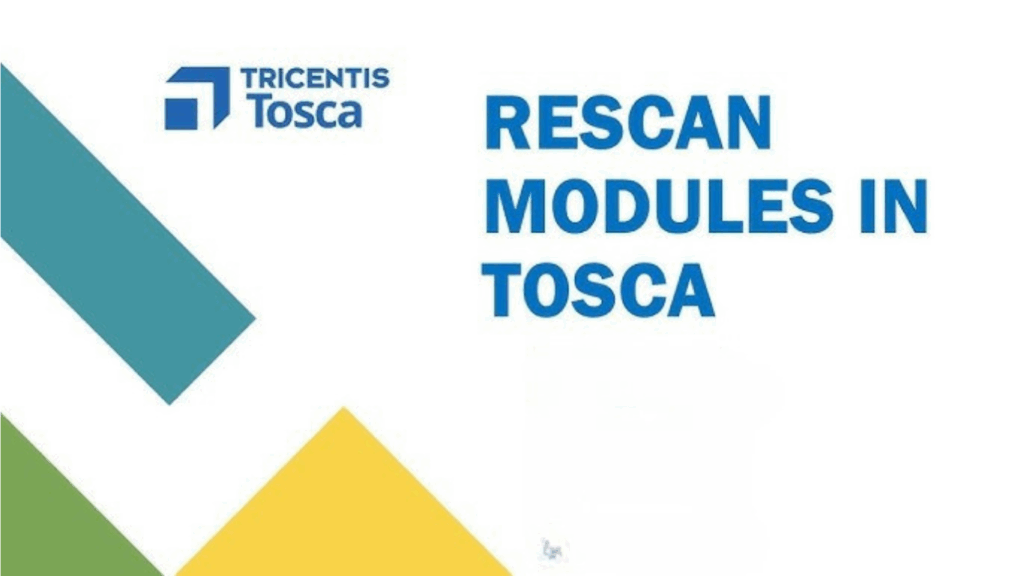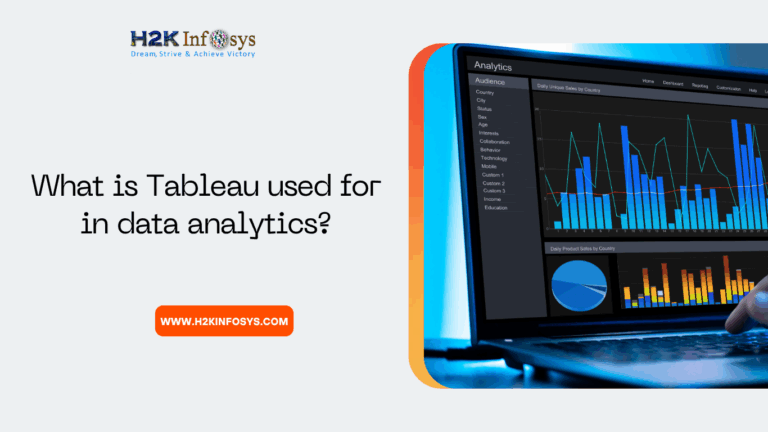It doesn’t take an expert to say that Tableau rocks. Without any coding, and with mere dragging and dropping, Tableau allows you to create the visualizations. At the same time, without much fuss, Tableau allows you to connect with Python and R. Listed below are the top Tableau interview questions and answers for those who are looking for exciting career options.
What is Tableau?
Tableau is one of the most powerful data visualization and Business Intelligence (BI) tools that can be used to perform Exploratory Data Analysis (EDA) or Data Wrangling, data blending, creating dashboards and stories, making presentations, etc. It essentially provides insights into data to share and manage data.
Who can benefit from Tableau training?
From absolute beginners to experienced professionals from IT/non-IT background can learn Tableau as it doesn’t require any coding experience. Tableau makes all the visualizations possible from a simple click of the mouse.
So, who is the targeted audience?
- Statisticians
- Software Developers
- Product Managers
- Team Leads
- ETL developers
- Beginners
Top 10 Tableau Questions and answers
Here are the top interview questions and answers which can help you become a Tableau expert and test your level of skill post the completion of the Tableau course.
What are the different data types supported in Tableau?
- Strings
- Date
- Date and time
- Boolean
- Geographical values
- Numerical values
Explain Dimensions and Measures in Tableau.
Dimensions
Dimensions are the qualitative data such as names, dates, geographical data, etc which can be classified into different fields.
Example: Postal code, cities, names of customers, states, countries, customer ID, and product ID, etc.
Measures
These are the quantitative data, which means these fields have numerical values in them. They can be aggregated and can support mathematical calculations.
Example: Profit, Sales, Total orders, Sales per customer, et
Explain ‘Discrete’ and ‘Continuous’ fields.
All the fields in the Measures and Dimensions can be either discrete or continuous. The blue color represents discrete Measures/Dimensions and the green represents continuous Measures/Dimensions.
- Discrete (Blue) – distinct and separate.
- Continuous (Green) – unbroken and without interruption
Name the different kinds of joins in Tableau?
Different types of joins in Tableau are
- Inner – The result table has the values that contain common matches in both the tables.

- Left – The result table has all the values from the left table and the corresponding matches from the right table.

- Right – The result table has all the values from the right table and the corresponding matches from the left table.

- Outer – The result table has all the values from both the tables.

- Union – The result table has the rows of one table appended to the other table.

What is the difference between the Live connection and an Extract?
A Live connection is the real-time data, where any update in the database gets reflected in Tableau.
Data processing in live connection tends to be slower.
Example: To track the records of incoming patients in the hospital needs a live connection
The Extract is the snapshot of the data. It is essentially a local file in the system and hence, Tableau doesn’t need database connection for visualization.
The extract needs to be refreshed to be able to receive the updates from the actual data source.
Example: To create visualizations of the patients’ records for daily, weekly, or monthly trends.
What is the difference between .twbx and .twb files in Tableau?
.Twbx is a packaged Tableau workbook. It has the visualizations along with the data source or any other file like images used in the visualization, bundled together.

.Twb is an XML file that has the entire Tableau workbook comprising the sheets, stories, and dashboard. In order to share the .twb file, you need to send the data source file separately as it is not included with the visualization.

What is the latest version of Tableau? And what are the different Tableau Products?
The latest Tableau version is 2020.2 which was released in May/2020.
The different Tableau products are:
- Tableau Desktop
This is the paid version available for everyone. The user requires a subscription post the 14 days free trial. You can connect to data residing in your data warehouse for a live connection.
- Tableau Server
This is an enterprise-level software
- Tableau Online
This is the hosted version of Tableau server, where the visualization is faster and easier.
- Tableau Reader
This is free software that can be used to view the visualizations prepared in Tableau Desktop; however, it doesn’t allow editing or performing any interactions.
- Tableau Public
This is a free software to make visualizations, however, the saved worksheets can be viewed by everyone.
How many maximum numbers of tables can be joined in Tableau?
At a maximum, 32 table joins can be performed.
What are shelves in Tableau?
The shelves in Tableau are the various panes for dragging and dropping the fields.

What are the groups in Tableau?
Grouping in Tableau means putting together various dimension fields to create a higher category of dimensions. To create a group, you select all the required fields under dimension by pressing ‘ctrl’ and select the paperclip symbol that shows up in the dialog box. By this, Tableau doesn’t change the original dimension but creates a new dimension group.

Tableau Admin Interview Questions
Preparing for Tableau admin interview questions involves understanding key aspects of Tableau server management and troubleshooting. Employers often ask about server deployment strategies, security configurations, and disaster recovery plans. Familiarity with user access controls, performance optimization techniques, and handling server upgrades are crucial. Demonstrating proficiency in monitoring server health, managing licenses, and resolving technical issues promptly showcases readiness for the role. Stay prepared by studying common Tableau admin interview questions to confidently discuss topics like scalability, backup procedures, and compliance with organizational data governance policies.
Tableau Server Interview Questions
Preparing for Tableau Server interview questions involves understanding its architecture, security features, and scalability. Key areas include configuring permissions, managing data extracts, and optimizing performance. Candidates should demonstrate proficiency in troubleshooting server issues, implementing backups, and understanding user roles. Familiarity with Tableau Server’s integration with other systems and its role in enterprise analytics is crucial. Practice discussing strategies for server maintenance, upgrades, and ensuring data integrity. Mastering Tableau Server interview questions requires a solid grasp of server administration and the ability to articulate solutions clearly.
Tableau Developer Interview Questions
Prepare for Tableau developer interview questions by focusing on key areas like data visualization techniques, advanced calculations, and dashboard design principles. Expect queries on Tableau Server administration, data integration methods, and performance optimization strategies. Demonstrating proficiency in creating complex visualizations, utilizing Tableau’s scripting and API capabilities, and troubleshooting data connectivity issues is crucial. Stay prepared to discuss best practices for data extraction, transformation, and loading (ETL), as well as how to handle security and scalability challenges in Tableau environments. Mastering these topics will enhance your readiness for Tableau developer interview questions.
Tableau Interview Questions for Data Analysts
Preparing for Tableau interview questions for data analysts involves understanding key technical and practical aspects. Expect inquiries about data visualization techniques, such as creating complex charts and dashboards, utilizing Tableau’s functionalities. Showcase proficiency in connecting diverse data sources, performing calculations, and explaining data insights effectively. Employers may also assess your ability to optimize performance and troubleshoot issues within Tableau environments. Practice scenario-based questions to demonstrate problem-solving skills and familiarity with Tableau’s features. Being prepared with examples of past Tableau projects and their outcomes will highlight your analytical prowess and readiness for the role.
Tableau Assessment Test
A Tableau assessment test evaluates a candidate’s proficiency in using Tableau software to analyze data and create visualizations. This test assesses various skills, including data connection, visualization creation, dashboard development, and data interpretation. Candidates may encounter tasks involving Tableau features like calculations, parameters, and mapping functionalities. The Tableau assessment test is crucial for employers to gauge an applicant’s ability to manipulate and present data effectively using Tableau’s tools and functionalities. It serves as a benchmark to ensure candidates possess the necessary skills and knowledge required for roles involving data analysis and visualization.
Tableau Quiz
A Tableau quiz tests your knowledge of data visualization techniques and Tableau software functionalities. It assesses your ability to create interactive dashboards, employ data blending techniques, and utilize advanced features like calculated fields and parameters. Understanding how to connect Tableau to various data sources, build visualizations such as bar charts and maps, and optimize dashboard performance are crucial. The quiz typically includes scenario-based questions to evaluate your problem-solving skills and practical application of Tableau tools. It’s essential to prepare by practicing with sample datasets and familiarizing yourself with Tableau’s latest updates and best practices to excel in a Tableau quiz.
Tableau Quiz Overview:
- A Tableau Quiz assesses proficiency in Tableau software and data visualization skills.
- Questions cover Tableau’s interface, data connections, and visualization creation.
- Participants demonstrate knowledge of calculations, filters, and dashboard design.
- Advanced topics may include LOD expressions, data blending, and performance optimization.
- Understanding Tableau Server functionalities and collaborative features may be tested.
- Practice quizzes often include scenario-based questions to evaluate problem-solving abilities.
- Successful performance in a Tableau Quiz indicates readiness to leverage Tableau for impactful data analysis and visualization.

